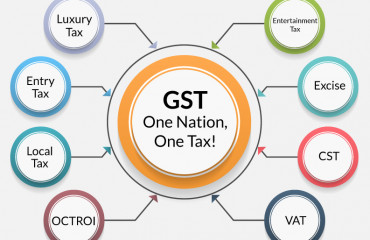
NEW DELHI : The government’s idea of merging the National Anti-profiteering Authority (NAA), which penalizes businesses for goods and services tax (GST)-related profiteering, with the anti-trust regulator Competition Commission of India (CCI) has run up against a host of administrative challenges, including the short span of about a month left before the expiry of the NAA’s term.
NEW DELHI : The government's idea of merging the National Anti-profiteering Authority (NAA), which penalizes businesses for goods and services tax (GST)-related profiteering, with the anti-trust regulator Competition Commission of India (CCI) has run up against a host of administrative challenges, including the short span of about a month left before the expiry of the NAA's term.
The challenges include lack of funding and infrastructure needed for the CCI to take on an additional mandate; differences in the design of the investigating arms of the two regulators; and the existing cap of three members in the CCI in addition to a chairman, said a person informed of the discussions on the matter in the government.
While the government is not in favour of extending the term of the NAA, originally set up for two years in 2017 and extended twice till end of November 2022, the alternative arrangement of merger with the CCI is facing several administrative issues.
There are complaints on profiteering that are yet to be dealt with even amid chances of new complaints coming up, making it hard for the government to bring the GST-related anti-profiteering ecosystem to a closure.
This despite the fact that the NAA was set up as a temporary measure to prevent profiteering by businesses at the time of transition to the new indirect tax system in 2017.
In addition, there are petitions challenging the anti-profiteering regime's constitutional validity, which are now sub judice. The fact that real estate projects have long gestation periods , with some projects that started prior to 2017 yet to be completed, means there could be more profiteering complaints on real estate developers in the future, said a second person, who is also privy to the discussions in the government.
The plan being explored by the government as suggested by the federal body, the GST Council, is to merge the investigating wings of the CCI and NAA, transfer pending profiteering cases to the CCI for adjudication and repatriate officials in the NAA is to their parent cadres.
However, the investigation wings of the NAA and CCI have some differences. The Directorate General of Anti-Profiteering (DGAP), the investigation wing of the NAA, has to be an expert in indirect taxes, while the Directorate General probing anti-competitive behaviour could be from a much broader set of disciplines. The DG, CCI need not even be from the discipline of competition law.
This diversity would call for rule changes for implementing the CCI-NAA merger plan. Also, a Cabinet decision needs to be taken to expand the top brass of the CCI, which is currently limited to three members and a chairperson, said the first person quoted above.
A smooth transition of the anti-profiteering ecosystem would require urgent appointments given that recruitments take a long time in regulatory bodies, the person said.
Emails sent on Wednesday to the spokesperson of the finance ministry and to the CCI and GST Council remained unanswered at the time of publishing.
Experts said the main challenge faced by businesses in complying with the anti-profiteering regime is the lack of specific guidelines and standard procedures to calculate the commensurate price reduction warranted by a tax cut or availability of tax credits. Sanjay Chhabria, director, indirect tax at Nexdigm, a consultancy, said an unfavourable order from the regulator creates a negative impression about the value of a business in the minds of customers.
Officials admit that computing the extent of profiteering, the benefit of tax rate reduction or availability of input tax credit that has not been passed on to consumers, is a tough task, especially in the case of tax credits.
